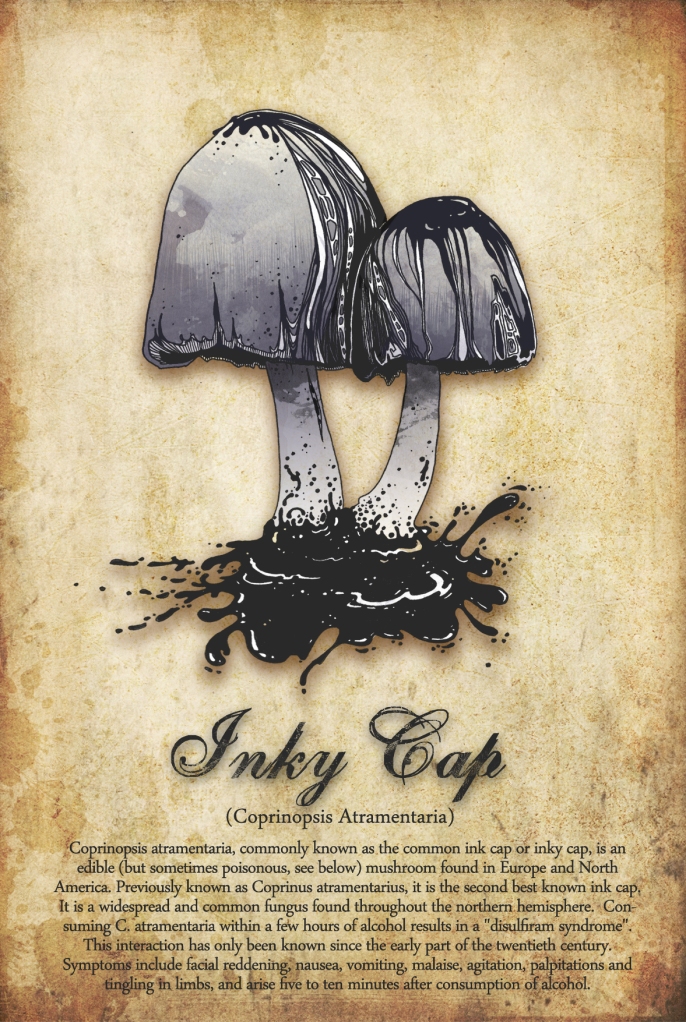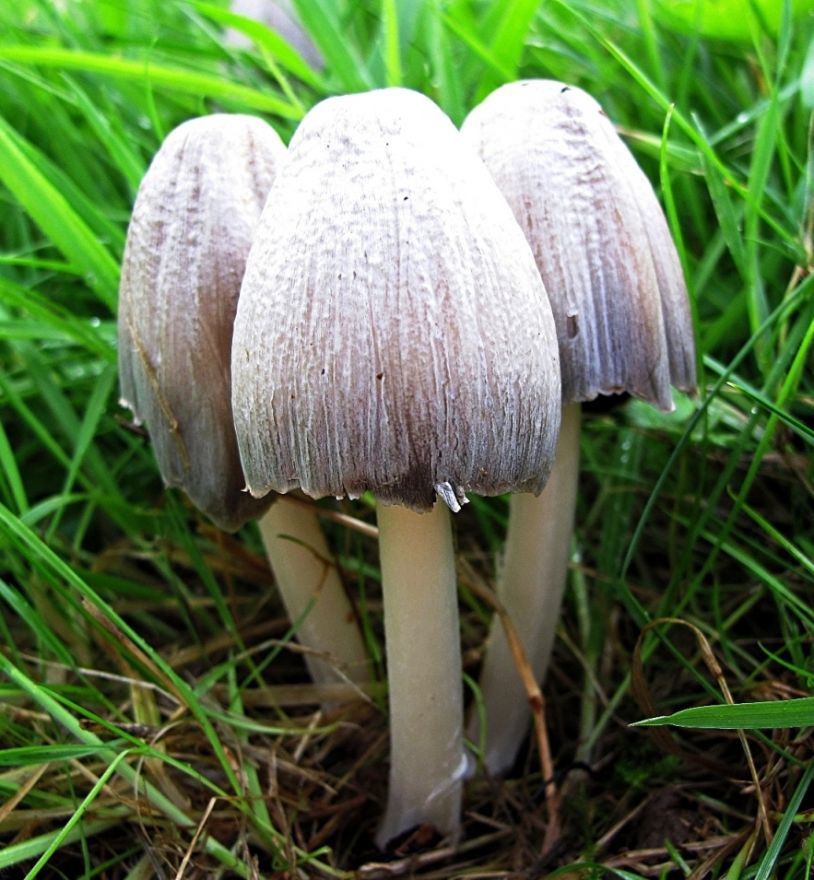
Coprinopsis Atramentaria commonly known as Common Inkcap, Tippler’s Bane, Grauer Faltentintling, Coprin noir d’encre, Ráncos tintagomba
Available as a print, poster, pillow and more on Society6
“The common ink cap was first described by French naturalist Pierre Bulliard in 1786 as Agaricus atramentarius before being placed in the large genus Coprinus in 1838 by Elias Magnus Fries. The specific epithet derives from atramentum, Latin for “ink”.
“Consuming Coprinopsis atramentaria within a few hours of alcohol results in a “disulfiram syndrome”. This interaction has only been known since the early part of the twentieth century. Symptoms include facial reddening, nausea, vomiting, malaise, agitation, palpitations and tingling in limbs, and arise five to ten minutes after consumption of alcohol. If no more alcohol is consumed, they will generally subside over two or three hours. Symptom severity is proportional to the amount of alcohol consumed, becoming evident when blood alcohol concentration reaches 5 mg/dL, and prominent at concentrations of 50–100 mg/dL. Disulfiram has, however, been known to cause myocardial infarction (heart attack). The symptoms can occur if even a small amount of alcohol is consumed up to three days after eating the mushrooms, although they are milder as more time passes.Rarely, a cardiac arrhythmia, such as atrial fibrillation on top of supraventricular tachycardia, may develop.” – Wikipedia
“Like other coprinoid mushrooms, Coprinopsis atramentaria has gills that turn black and eventually liquefy, creating an “ink.” In fact, for many authors, Coprinopsis atramentaria is the “inky cap” that gives the coprinoid mushrooms their common name. Widespread and commonly encountered, it tends to grow in clusters from senescent root systems around stumps. It has a gray to brownish gray cap that features a few tiny scales over the center but lacks prominent scales or the mica-like granules of Coprinellus micaceus.” – Mushroom Expert
“Coprinus atramentarius , now Coprinopsis atramentaria, the Inky Cap, contains coprine, a Class D toxin (Poisindex V). The onset of symptoms is related to the consumption of alcohol three hours to as long as 5 days after the meal of mushrooms. It is believed that the coprine must first sensitize the body to alcohol and thus consumption of alcohol before or with the meal is safe. However, I know of two cases where even consumption of alcohol just before the meal lead to a reaction. In any case, only a few individuals are susceptible.
There are many species of mushrooms that most people can eat with no trouble at all, but which cause mild to severe gastric distress in some individuals. The mechanism of action of coprine, a cyclopropylglutamine, is identical to that of disulfiram, known as Atabuse â , a drug given to keep alcoholics off the bottle. Research was conducted on Beagles to see if coprine would be a suitable substitute. However, coprine was found to produce sterility and testicular damage in Beagles.” – Academic.Evergreen
“The generic name Coprinopsis indicates that this mushrooms genus is similar to the genus Coprinus, which literally means ‘living on dung’ – that’s true of quite a few of the inkcaps but not particularly apt for this and several other species. The specific epithet atramentaria comes from the Latin ‘atramentum’ meaning a very dark or black substance, in particular a liquid such as ink. ” – First Nature
